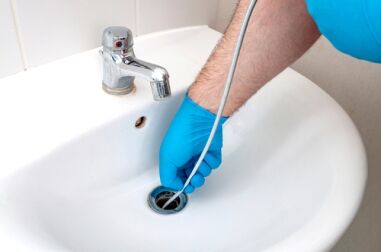Nearly everybody will have their own individual rationale on the subject of 10 Common Rental Property Repairs.

Managing pipes issues in rental properties effectively is crucial for preserving tenant contentment and maintaining the property's value. Whether you're a proprietor or a property manager, understanding how to deal with these common issues can save you time and money while guaranteeing conformity with legal obligations. Here's a step-by-step overview on how to deal with pipes concerns in rental homes.
Paper Every little thing
Maintain detailed records of all reported plumbing issues and the actions required to settle them. Documents should include days, summaries of the trouble, interaction with tenants, and receipts from service providers or plumbing technicians. This details can be vital for insurance policy cases, tax deductions, and legal protection.
Use Qualified Professionals
Always use certified and insured professionals for considerable pipes fixings and installations. This ensures that the work depends on code and can aid avoid liability issues in case of crashes or more damage. It additionally assures renters that repairs are being dealt with professionally.
Develop Clear Interaction
Motivate occupants to report any type of plumbing issues as quickly as they happen. Offer multiple communication channels such as phone, e-mail, or a lessee website to make it simple for them to reach out. Trigger reactions to these records can stop minor issues from escalating right into major problems.
Enlighten Occupants
Inform your tenants concerning what makes up a plumbing emergency situation and what does not. Supply guidelines on just how to manage minor concerns themselves, such as utilizing a plunger to unblock a bathroom. Also, educate them regarding what they should stay clear of putting down drains pipes to avoid clogs, such as oil, coffee grounds, and non-biodegradable products.
Regular Upkeep
Execute a regular maintenance timetable for all plumbing systems in your service buildings. Routine checks can aid determine and resolve problems like leakages, sluggish drains pipes, or corroded pipelines before they end up being serious. Think about hiring an expert plumbing to evaluate the homes annually or semi-annually.
Quick Action to Emergency Situations
Have a plan in position for replying to pipes emergencies. This must consist of having the contact info of dependable pipes solutions that provide 24/7 emergency situation fixings. Quick action is important to minimize damage in scenarios like burst pipelines or severe leaks.
Preventive Upgrades
Think about updating older plumbing systems and fixtures to more contemporary, reliable versions. This can reduce the frequency and intensity of pipes concerns and reduced long-term maintenance expenses. It's additionally a marketing factor for potential renters who value upgrades and contemporary attributes.
Lessee Move-Out Inspections
Conduct comprehensive plumbing checks throughout move-out examinations to guarantee that any type of problems are recognized and resolved prior to a new tenant moves in. This prevents conflicts with new renters over pre-existing conditions and guarantees the building remains in leading problem.
Understand Lawful Duties
Recognize your lawful duties pertaining to pipes and basic property maintenance. Most jurisdictions need property managers to guarantee their buildings are habitable which all pipes systems remain in good working order. Failure to deal with major problems quickly can result in legal actions from renters.
Renter Reimbursements
If a plumbing issue requires immediate focus and the lessee settles the concern by themselves, have a clear policy in place for reimbursing prices. Make certain lessees recognize they need to acquire prior approval for higher-cost fixings unless it's an outright emergency situation.
Final thought
Dealing with pipes problems in rental residential properties needs a proactive approach and good interaction with renters. By remaining on top of upkeep, responding without delay to emergencies, and using professional experts, property owners can maintain their homes in outstanding problem and preserve excellent connections with renters.
How to Handle Water Damage in a Rental Property
What is Water Damage?
Water damage is harm or destruction caused by water entering areas where it is not supposed to be. It can be caused by a variety of sources and can manifest in different ways. The most common examples of water damage include:
- Leaking roof
- Plumbing leaks
- Appliance malfunctions
- Poor drainage
- Flooding
- Sewage backup
- Condensation
- Tenant negligence
- HVAC system issues
- Frozen pipes
Is water damage dangerous?
Water damage itself is not inherently dangerous, but it can lead to various hazards and health risks if not promptly and properly addressed. The severity of these risks depends on the extent of the water damage, the source of the water, and how quickly it is mitigated.
Some potential dangers associated with water damage include structural damage, mold and bacterial growth, electrical hazards, water contamination, and pest infestations. In situations where mold and mildew have gone unaddressed, mold can start to develop within 24-48 hours of water exposure, and this can impose a serious health risk to tenants. In particular, mold spores and damp conditions can lead to respiratory issues and even make existing health problems worse, such as allergies, asthma, or immune disorders.
Water Damage in an Apartment - Who is Responsible?
- If the water damage is caused by the tenant’s negligence, the tenant is responsible for the cost of repairs.
- If the water damage is caused by a defect in the property, the landlord is responsible for the cost of repairs.
- If the water damage is a result of natural causes, such as excessive rain, then the landlord is responsible, since the water intrusion likely occurred due to a defect in the property.
Landlord Responsibility water damage in rental property
Since maintaining habitability is the landlord’s legal responsibility, landlords are responsible for any resulting structural damage caused by water damage. These structural damages may include damage to walls, roofs, ceilings, and flooring. If water damage has affected the rental property’s original structure, the landlord is responsible for repairing or replacing those materials. Therefore, landlords should have property insurance that covers the structural components of their rental property so that they can receive help with the costs of covered events.
Preventative measures can also help landlords avoid massive renovations. Preventative maintenance may include conducting regular inspections to identify and address potential water damage before it becomes a major and urgent problem.
If a landlord fails to meet their responsibilities regarding water damage, it can lead to legal disputes and potential liability. Tenants who believe their landlord is not addressing water damage issues in accordance with California law can seek legal advice or contact local housing authorities for assistance.
https://www.goodlifemgmt.com/blog/water-damage-in-a-rental-property/

I stumbled upon that page about How to Handle Plumbing Issues in Your Rental Property when exploring the internet. In case you liked our blog post plz be sure to share it. We love your readership.
Comments on “Dealing with Plumbing Issues in Rental Properties: A Guide”